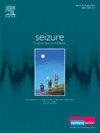Epidemiological trends of idiopathic epilepsy in Central Asia: Insights from the global burden of disease study (1990–2021)
IF 2.8
3区 医学
Q2 CLINICAL NEUROLOGY
引用次数: 0
Abstract
Background
Epilepsy is one of the major neurological disorders affecting millions of people worldwide, with significant variations in incidence and prevalence across different regions. This study focuses on the epidemiological trends of idiopathic epilepsy in Central Asia, a region characterized by a long process of healthcare system transformation and socioeconomic conditions after the collapse of the Soviet Union. Understanding these trends is crucial for developing effective public health strategies tailored to the unique needs of the population.
Methods
GBD 2021 data were analyzed for 9 Central Asian countries (Armenia, Azerbaijan, Georgia, Kazakhstan, Kyrgyzstan, Tajikistan, Turkmenistan, Uzbekistan, Mongolia), identifying trends in incidence, prevalence, mortality, and disability-adjusted life years associated with idiopathic epilepsy from 1990–2021. The average annual percentage change (AAPC) was determined to compare regional and global trends. The data were disaggregated by country, year, age, and sex to identify demographic patterns.
Results
In 2021, the highest prevalence of idiopathic epilepsy was in Uzbekistan (473 per 100,000; 95 % UI: 140.1–761.1), while Armenia had the lowest (291.3; 95 % UI: 94.8–486.1). Incidence decreased across most countries, with Tajikistan showing a significant decline (AAPC:0.89 %; 95 % CI:0.98 to –0.8). Mortality was highest in Tajikistan (4.6; 95 % UI: 3.4–6.1) and lowest in Armenia (0.9; 95 % UI: 0.7–1.1). DALYs were highest in Tajikistan (422.7; 95 % UI: 284.1–591.7) and lowest in Armenia (118.8; 95 % UI: 57.4–204.9). Most trends were declining, except for Turkmenistan, which showed increases in prevalence and DALYs. The sex-specific estimates are consistently greater in the male population across all the metrics.
Conclusions
Central Asia has demonstrated promising downward trends in the burden of epilepsy; however, challenges persist in some countries. This study underscores the urgent need for local data generation, robust registries, and tailored policies to improve care for people with epilepsy in the region.
中亚特发性癫痫的流行病学趋势:来自全球疾病负担研究的见解(1990-2021)
癫痫是影响全世界数百万人的主要神经系统疾病之一,不同地区的发病率和流行率存在显著差异。本研究的重点是中亚地区特发性癫痫的流行病学趋势,中亚地区在苏联解体后具有长期的医疗体制转型过程和社会经济条件。了解这些趋势对于制定适合人口独特需求的有效公共卫生战略至关重要。方法分析9个中亚国家(亚美尼亚、阿塞拜疆、格鲁吉亚、哈萨克斯坦、吉尔吉斯斯坦、塔吉克斯坦、土库曼斯坦、乌兹别克斯坦、蒙古)的gbd 2021数据,确定1990-2021年与特发性癫痫相关的发病率、患病率、死亡率和残疾调整生命年的趋势。确定年平均百分比变化(AAPC)是为了比较区域和全球趋势。这些数据按国家、年份、年龄和性别分类,以确定人口统计模式。结果2021年,乌兹别克斯坦的特发性癫痫患病率最高,为473 / 10万;95% UI: 140.1-761.1),亚美尼亚最低(291.3;95% ui: 94.8-486.1)。大多数国家的发病率都有所下降,塔吉克斯坦的发病率显著下降(AAPC: 0.89%;95% CI:0.98至-0.8)。死亡率最高的是塔吉克斯坦(4.6;95% UI: 3.4-6.1),亚美尼亚最低(0.9;95% (ui: 0.7-1.1)。塔吉克斯坦的伤残调整寿命最高(422.7;95% UI: 284.1-591.7),亚美尼亚最低(118.8;95% ui: 57.4-204.9)。除土库曼斯坦外,大多数趋势都在下降,该国的流行率和伤残调整生命年有所增加。在所有指标中,男性人群的性别特异性估计值始终更高。结论中亚地区癫痫负担呈下降趋势;然而,在一些国家,挑战依然存在。这项研究强调,迫切需要在当地生成数据,建立健全的登记制度,并制定有针对性的政策,以改善该地区对癫痫患者的护理。
本文章由计算机程序翻译,如有差异,请以英文原文为准。
求助全文
约1分钟内获得全文
求助全文
来源期刊

Seizure-European Journal of Epilepsy
医学-临床神经学
CiteScore
5.60
自引率
6.70%
发文量
231
审稿时长
34 days
期刊介绍:
Seizure - European Journal of Epilepsy is an international journal owned by Epilepsy Action (the largest member led epilepsy organisation in the UK). It provides a forum for papers on all topics related to epilepsy and seizure disorders.
 求助内容:
求助内容: 应助结果提醒方式:
应助结果提醒方式:


